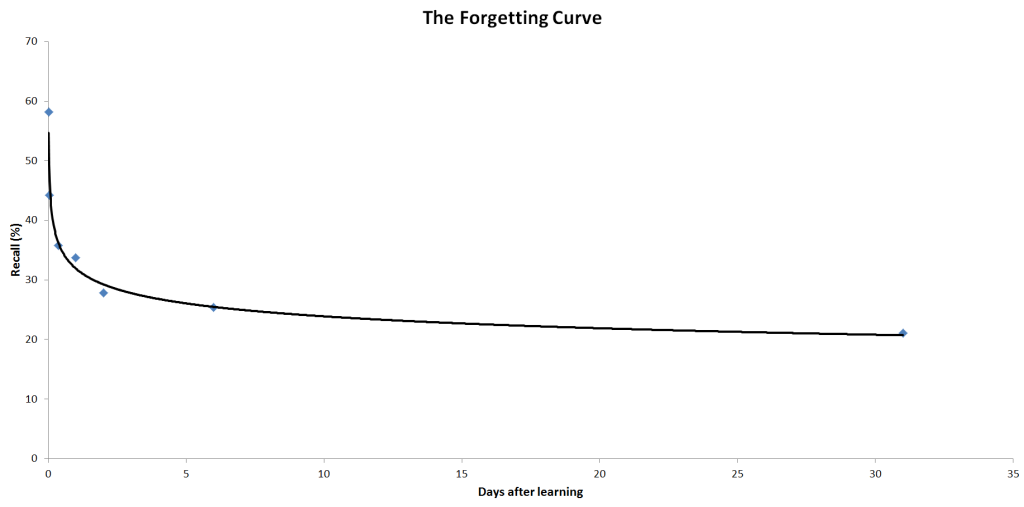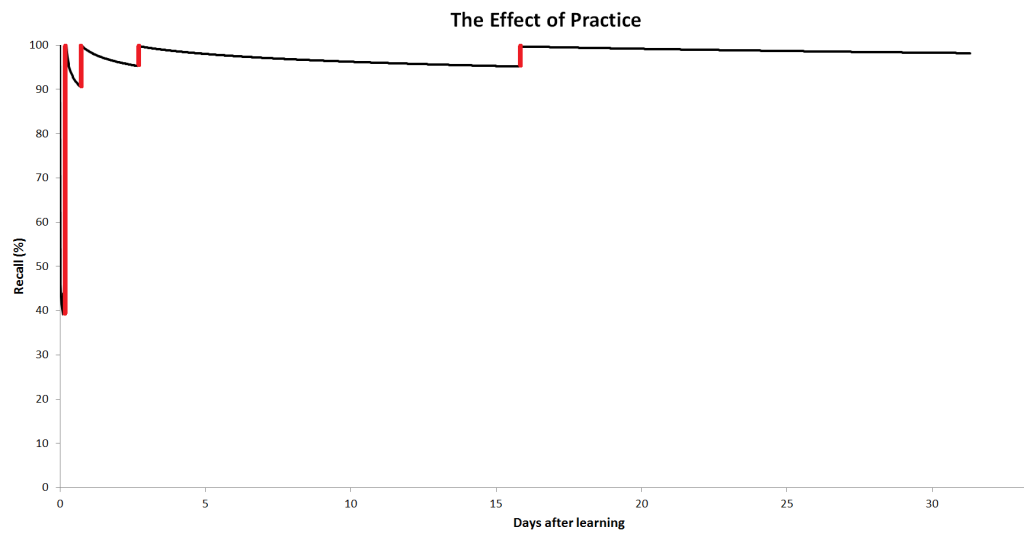Spaced Repetition: Your Weapon of Mass Memorization
When we first came into med school, one of the scariest things we heard was a piece of well-meaning advice from upperclassmen. They told us first years, “Look, don’t worry too much about remembering everything. When you get to Step 1, you’ll have to relearn everything anyway.”
What a depressing thought! After all our effort to learn the preclinical material, we wouldn’t even get durable knowledge out of the bargain. It would all be gone when we needed it for boards…worse yet, what would be left by the time we were practicing physicians? There had to have been a better way to learn – one that allowed us to learn effectively but also keep our hard-won knowledge.
Well, we found one, and we found it so powerful that we decided to make it the core technique of our study methodology. It’s called spaced repetition.
A bit of history
More than 100 years ago, a German psychologist named Hermann Ebbinghaus made one of the most critical discoveries about memory. Ebbinghaus had performed numerous experiments testing his own memory using lists of nonsense syllables. He would read the lists out loud and then immediately try to recall them correctly. If he could not recall correctly, he would re-read the lists and then try again until he could get it right.
From these experiments, Ebbinghaus made several remarkable discoveries. For one thing, he found that forgetting followed a predictable pattern. Below you can see a graph of Ebbinghaus’ seminal finding about the relationship between memory and retention interval. Just after learning some new material, within the first hour or so, retention is very high. But shortly after, within the first 24 hours, retention falls very rapidly to less than 40% and then levels off in subsequent days. This representation of forgetting is aptly called the Forgetting Curve. The takeaway is as clear as it is discouraging: we forget a lot and we forget very quickly. In light of Forgetting Curve, it’s almost a wonder that we remember anything at all.
Thankfully, another of Ebbinghaus’ findings is the silver lining to this dark cloud. Ebbinghaus found that practicing can slow down forgetting. And the more times he repeated learning his lists on day 1, the less time he would need to spend re-learning in subsequent days. The message is that forgetting can be thwarted by repeated practice. That, after all, is what studying is all about.
Ebbinghaus made another key observation: when you study matters more than how often you study. In one of his experiments, Ebbinghaus arranged his studying efforts in two ways. In one case, he crammed 68 successive reviews and then tested himself the next day to see how much he could remember. He then took the same material and spaced out his learning over the course of three days, but only doing 38 repetitions. At the end of those three days, he tested himself to see how much he could remember. Here’s Ebbinghaus describing the results:
38 repetitions, distributed in a certain way over the three preceding days, has just as favorable an effect as 68 repetitions made on the day just previous … This makes the assumption probable that with any considerable number of repetitions a suitable distribution of them over a space of time is decidedly more advantageous than the massing of them at a single time. (Ebbinghaus, 1885: 89)
Ebbinghaus got the same results with nearly half the effort when he spaced out this learning rather than cramming.That’s pretty amazing.
These results gave rise to what has been called the spacing effect: “learning events that are repeated over time result in more efficient learning and greater retention compared to exposure to a single bolus of material.” The spacing effect has been studied and validated many times since Ebbinghaus first described it.
Indeed, according to one recent article, “the spacing effect is arguably the most replicable and robust finding from experimental psychology. Hundreds of articles, including a number of reviews and meta-analyses, have found a spacing effect in a wide variety of memory tasks.”
Some of these studies further refined the spacing schedules, and the required number of repetitions fell still lower. Using the Learning Curve and our knowledge of the decay rate of knowledge, we can create algorithms to predict, with uncanny accuracy, just when we’re most likely to forget a fact. By timing our study sessions appropriately, we can radically extend our memory.
In one randomized controlled trial, Kerfoot et al. looked at the impact of the spacing effect on retention of physical exam skills among medical students at Harvard. All the students received clinical teaching about how to perform physical exams. In addition, one group got a set of questions emailed to them once a week for three weeks, while the other group only got one week of emails. At the end of the course, the group that had three cycles of emails scored 74 on the exam, compared to 59 for students who only got one cycle of email. Despite the minor time obligation to complete the emailed questions, 85% of participants recommended the spacing program for the next year’s class. This study shows that spaced repetition can work well for medical school, even on the relatively short time scales of a physical exam course. As we know, we can expect the benefits of spacing to only increase as time goes on.
Cramming: a Faustian bargain
You may have noticed something funny here. From what we’re saying, it seems that the spacing effect can help us retain more while studying less. Yet many of us have gotten quite far in our academic careers by doing exactly the opposite, through intensive cramming just before an exam. If cramming is so inefficient, then why does everyone do it?
Well, the simple truth is that cramming does work well in the short term. There is no denying that. You can load up your memory with information and some of it will stay there for a time. But as anyone who has ever crammed for a test can confirm, the gains are merely temporary. This is often good enough to pass weekly quizzes, and do well on tests without strongly cumulative elements. And since many classes are set up that way, cramming is often one way to get a good grade. But at the end of the day, all those efforts produce very little long-term knowledge.
Think about all that time and money you spent in college trying to learn for classes. How much of it do you remember now? The same goes for med school, with even more troubling consequences. A standard piece of advice for incoming medical students is “don’t get overwhelmed by coursework, you’ll have to re-learn it later anyway.” This advice takes for granted that we’re cramming, and that our knowledge from each course is going to rapidly decay. Well, in that case, how much will be left when we’re seeing patients?
Sadly, many medical schools have not made their curricula in a way that is consistent with robust learning principles like the spacing effect. Often, the curriculum promotes massed practice: weekly quizzes and non-cumulative exams. So we cram and then move on. This transforms medical school into what we call academic theater: it gives the appearance that everybody has learned the material well, but in fact, if you come back a week later, you’ll find that few could recall most of what they’ve “learned.”
Because of this arrangement, the temptation to cram is always going to be there. But the goal of our learning system is to break this unfortunate cycle and help you build durable, life-long knowledge. The spacing effect is a key component in that effort.
What’s next?
Great, but how do we apply the principles of spaced repetition to supercharge our own learning? Well, stay tuned! In the coming days, we’ll talk about several of the tools that students can use to effortlessly incorporate this technique into their studying. And in our book Learning Medicine we’ll be going into extensive detail both on what tools to use and specific tips on how to get the most out of them.


One comment
Angela K.
February 7, 2016
3:47 pm
Hello, I am a mechanical engineer trying to help my 20 year old niece, a pharmacy student, improve her studying and learning technique. I found your article very interesting and look forward to your book and more information on the subject. All the best with your work. Angela K.